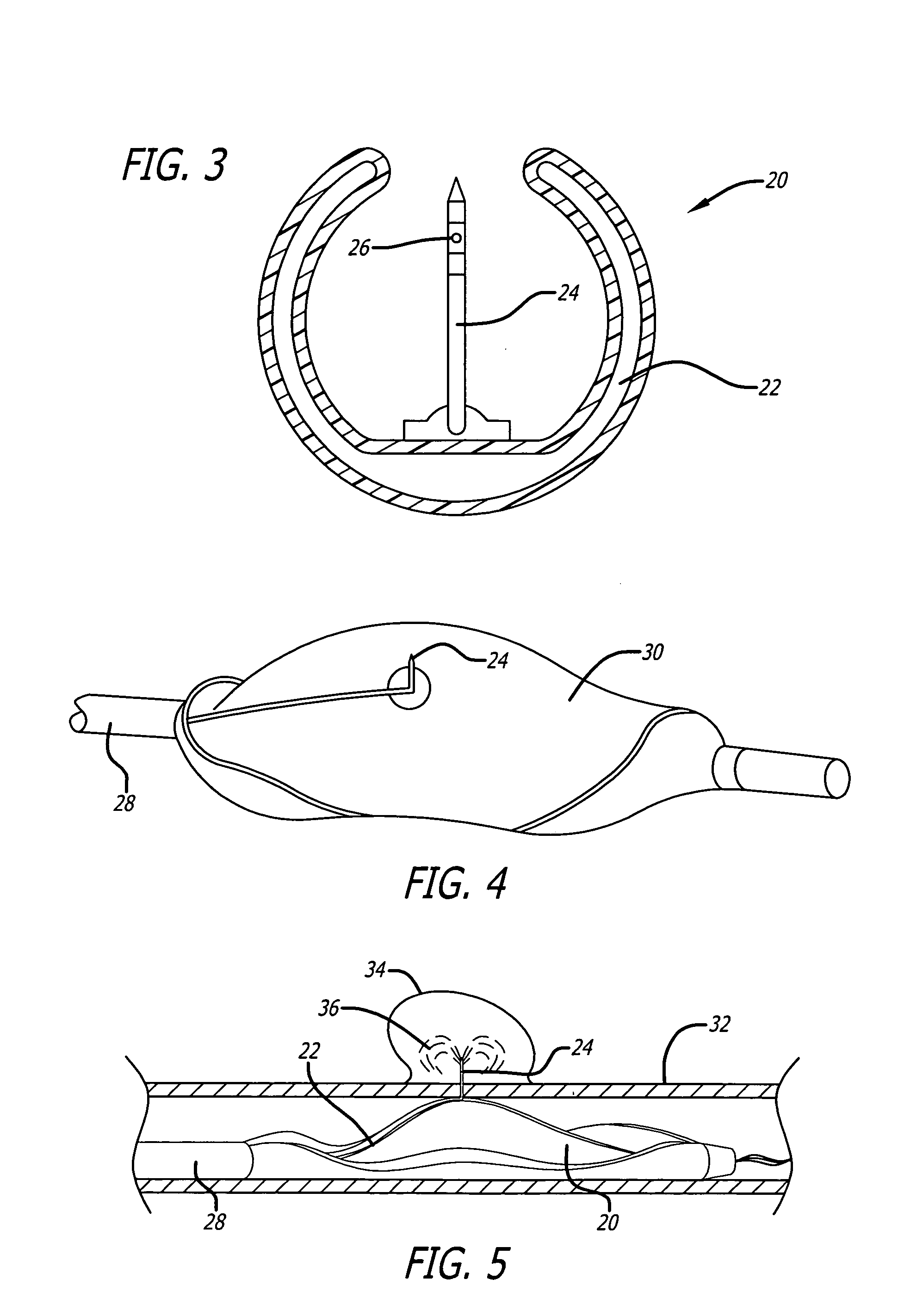Medical devices and compositions for delivering biophosphonates to anatomical sites at risk for vascular disease
a biophosphonate and anatomical technology, applied in the field of medical devices and compositions for delivering biophosphonates to anatomical sites at risk for vascular disease, can solve the problems of only being used systemically, vsmc proliferation and neointimal formation within previously opened arteries, and only being able to effectively undisturbed by quiescent cells
- Summary
- Abstract
- Description
- Claims
- Application Information
AI Technical Summary
Benefits of technology
Problems solved by technology
Method used
Image
Examples
example 1
Metal Stent Cleaning Procedure
[0060] Stainless steel stents are placed a glass beaker and covered with reagent grade or better hexane. The beaker containing the hexane immersed stents is then placed into an ultrasonic water bath and treated for 15 minutes at a frequency of between approximately 25 to 50 KHz. Next the stents are removed from the hexane and the hexane is discarded. The stents are then immersed in reagent grade or better 2-propanol and vessel containing the stents and the 2-propanol is treated in an ultrasonic water bath as before. Following cleaning the stents with organic solvents, they are thoroughly washed with distilled water and thereafter immersed in 1.0 N sodium hydroxide solution and treated at in an ultrasonic water bath as before. Finally, the stents are removed from the sodium hydroxide, thoroughly rinsed in distilled water and dried in a vacuum oven overnight at 40° C.
[0061] After cooling the dried stents to room temperature in a desiccated environment t...
example 2
Coating a Clean, Dried Stent Using a Drug / Polymer System
[0062] Zoledronic acid (250 μg) is carefully weighed and added to a small neck glass bottle containing 27.56 mL of tetrahydofuran (THF). The zoledronic acid-THF suspension is then thoroughly mixed until a clear solution is achieved.
[0063] Next 251.6 mg of polycaprolactone (PCL) is added to the zoledronic acid-THF solution and mixed until the PCL dissolved forming a drug / polymer solution.
[0064] The cleaned, dried stents are coated using either spraying techniques or dipped into the drug / polymer solution. The stents are coated as necessary to achieve a final coating weight of between approximately 10 μg to 1 mg. Finally, the coated stents are dried in a vacuum oven at 50° C. overnight. The dried, coated stents are weighed and the weights recorded.
[0065] The concentration of drug loaded onto the stents is determined based on the final coating weight. Final coating weight is calculated by subtracting the stent's pre-coating wei...
example 3
Coating a Clean, Dried Stent Using a Sandwich-type Coating
[0066] In one embodiment of the present invention a cleaned, dry stent is first coated with PVP or another suitable polymer followed by a coating of zoledronic acid. Finally, a second coating of PVP is provided to seal the stent thus creating a PVP-zoledronic acid-PVP sandwich coated stent. In another embodiment a parylene primer is applied to the bare metal stent prior to applying the zoledronic acid-containing polymer coating. In yet another embodiment, a polymer cap coat is applied over the zoledronic acid coating wherein the cap coat comprises a different polymer from the polymer used in the zoledronic acid-containing polymer coating.
[0067] In another embodiment of the present invention a polybutylmethacrylate-polyethylene vinyl acetate polymer blend is used to control the release of zoledronic acid.
[0068] The following example is not intended as a limitation but only as one possible polymer coating that can be used in...
PUM
 Login to View More
Login to View More Abstract
Description
Claims
Application Information
 Login to View More
Login to View More - R&D
- Intellectual Property
- Life Sciences
- Materials
- Tech Scout
- Unparalleled Data Quality
- Higher Quality Content
- 60% Fewer Hallucinations
Browse by: Latest US Patents, China's latest patents, Technical Efficacy Thesaurus, Application Domain, Technology Topic, Popular Technical Reports.
© 2025 PatSnap. All rights reserved.Legal|Privacy policy|Modern Slavery Act Transparency Statement|Sitemap|About US| Contact US: help@patsnap.com



